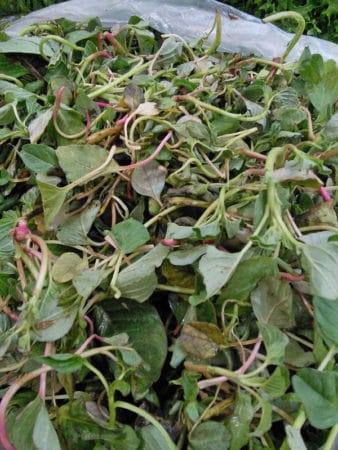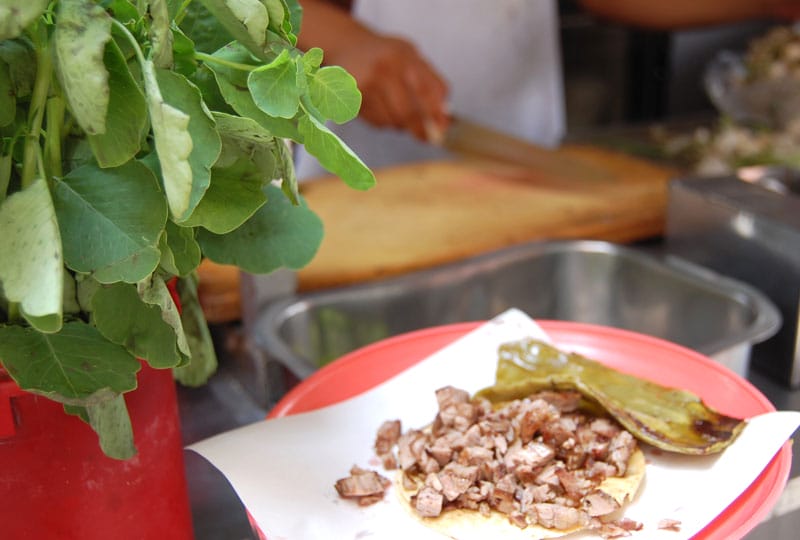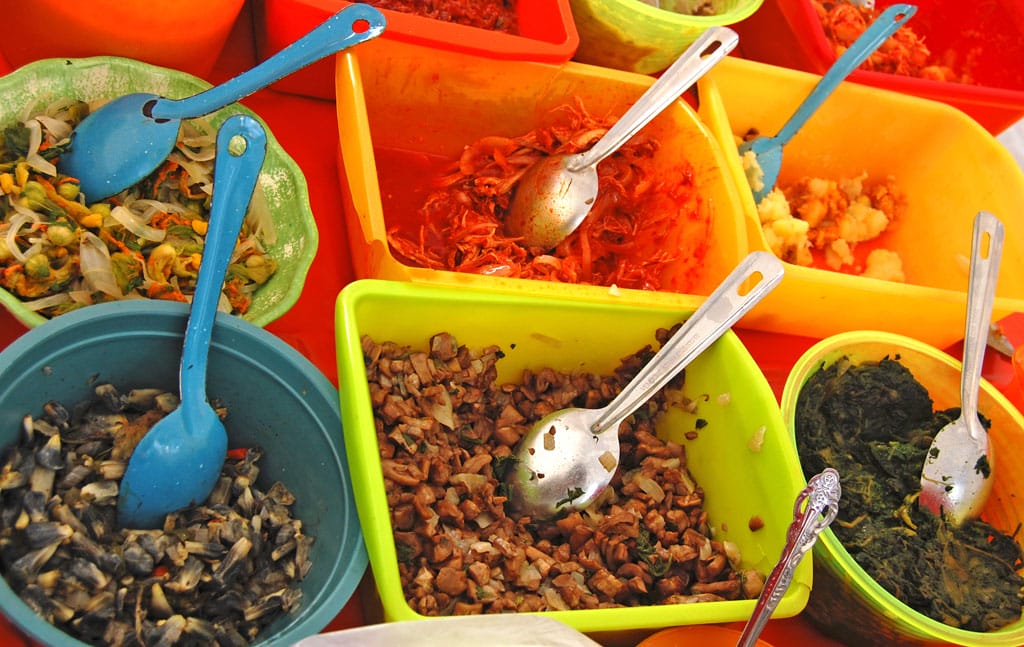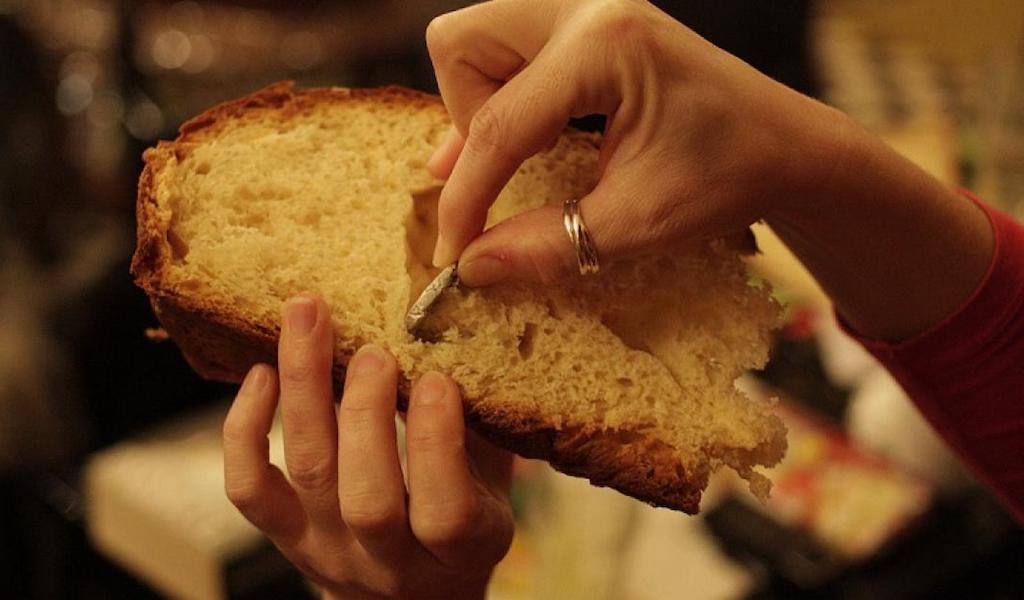“I’m a vegetarian – what will I eat in Mexico other than beans and rice?” Taco-madness has so consumed the world’s view of Mexican cuisine that the traditional mainstays of the diet often don’t get the billing they deserve. Beans, corn, squash, chilies and tomatoes are grown together in milpa farms – a biodynamic system of agriculture. Anyone who has ever grown anything knows: if you let a garden grow naturally, you’ll have an abundance of leafy greens that most of us call “weeds.”
Well, in Mexico, nothing edible goes to waste. Just as every bit of meat from an animal is used, so are those weeds and all the other tender leafy bits. Thus, along with all those traditional vegetables that originate here in the New World, you have the quelites. This word, from the Náhuatl quilitl, means: “edible greens, herbs and shoots of herbaceous plants.” By some accounts, this includes 400 to 500 plants found across Mexico – leafy greens and herbs, as well as vines, buds and flowers. So, vegetarians coming to Mexico, rejoice!
 The strong tradition of these greens means many are cultivated rather than collected from the wild – especially in order to supply vendors within a megalopolis like Mexico City. Still, cultivation in milpa farms, where few or no pesticides are used, is a far cry from conventional agriculture, and many of these greens will be new to most palates.
The strong tradition of these greens means many are cultivated rather than collected from the wild – especially in order to supply vendors within a megalopolis like Mexico City. Still, cultivation in milpa farms, where few or no pesticides are used, is a far cry from conventional agriculture, and many of these greens will be new to most palates.
Though continuously part of the diet since pre-Hispanic times, like many “old-fashioned” things, quelites fell out of fashion, particularly with recent generations associating these foods with poverty. True – those unable to afford meat prepare hearty greens in its place.
The tide has turned however, and as the world has discovered kale, the pre-Hispanic greens are back in fashion, with upscale chefs highlighting them on their menus. Those who have always eaten these foods offer them streetside and in fondas, expertly prepared without pretense; no reservations required.
Amidst cilantro and spinaches in Mexico City’s mercados and tiánguis (street markets), you’ll find a great variety of these greens, especially once the rainy season begins in June. A section of Mercado de la Merced boasts huge leafy mounds – a cacophony of aromas is released as you brush against them in the bustle and crush of the market. Many of these greens will only show up in home cooking or in restaurants specializing in certain regions. Chepíl, a distinctive herb and guias (vines of squash or beans) may show up on restaurant menus specializing in Oaxacan food, for example.
Quintoníl, huauzontles, cenizos: pigweed, goosefoot, lamb’s quarters. They’re all part of the large family of amaranth greens and are often called, generically, quelites by vendors who prepare whichever variety is most abundant at that time. For someone wanting a break from meat, a tlacoyo, an elongated football-shaped base filled with a purée of habas (favas) or frijoles (beans) or requesón (fresh cheese, similar to ricotta) and topped with these greens, is a nutritionally complete meal. (Strict vegetarians may want to ask the vendor if manteca, or lard, was used in the preparations of the masa or the guisados, or stewed vegetables.)
You can count on finding delicate flor de calabaza, or squash flowers, usually lightly stewed with onion and often the pungent herb epazote, offered alongside quintoniles as a filling for quesadillas or whichever corn base you want them with. Look also for esquites with epazote roughly chopped and sprinkled in liberally. The herb is also used to season the funky corn fungus, huitlacoche, as well as mushrooms and is cooked with beans. It’s understood to be anti-flatulent and has anti-parasitic properties, too.

Our personal favorite is pápalo, also called papaloquelite, pungent and refreshing, perfect to offset rich meat. It’s a key ingredient in cemita sandwiches, which are from Puebla, but can be found in Mexico City too. The rounded, soft-green leaves average the size of a 10-peso coin. Some taco and birria vendors place a fresh bunch at the corner of their stall for customers to add to their meal as they like. At the corner of Colima and Mérida in La Roma, we spotted one such stand and asked Cesár, the proprietor, who offers delicious tacos de suadero and chorizo, whether there was a reason he offered pápalo while others don’t. He responded that it’s simply preference. In terms of its flavor, pápalo is powerful, like cilantro turned up to 11. It can also have an effect that repeats for several hours…
Purslane, in English, grows with gusto around the world, but not everywhere is it regarded as a food – you may have pulled its thick succulent stems with teardrop-shaped leaves out of your garden at some time or another. In Mexico, verdolagas are probably the easiest of all the greens to find in the markets. They’re traditionally cooked and often offered in guisados (frequently with pork); occasionally vendors of licuados offer it as a mix-in. In the “New Mexican Cuisine” they show up as a salad green or garnish for their juicy saline-citrus freshness. The health benefits of this green are remarkable.
While not typical of central Mexican cuisine, hoja santa is important in Veracruz and Oaxaca cooking. As a fresh leaf, it’s a large, velvety textured heart shape. The flavor is similar to anise or even root beer. Like verdolagas, it’s also being given a new look by enterprising food makers: we have come across it several times recently as a flavor of helado (ice cream) in a few of the new, hip heladerias and restaurants.
Editor’s note: Our recurring feature, Building Blocks, focuses on foods and ingredients that are fundamental to the cuisines we write about.
This article was originally published on June 27, 2016.
 January 2, 2024 A New Year’s Family Feast in Athens
January 2, 2024 A New Year’s Family Feast in Athens
When I think of Christmas and the festive season, I’m immediately transported back to my […] Posted in Athens July 4, 2018 Ma-Suya
July 4, 2018 Ma-Suya
Japanese cuisine is often the art of quiet subtlety, and to that end, salt is one of its […] Posted in Tokyo June 15, 2018 CB on the Road
June 15, 2018 CB on the Road
All morning, as we zoomed down south from Naples on a motorcycle, inky clouds threatened […] Posted in Naples
Published on August 10, 2019
Related stories
January 2, 2024
AthensWhen I think of Christmas and the festive season, I’m immediately transported back to my childhood. Christmas to a child is something magical – the massive tree lit up and surrounded by gifts, stockings hung on the fireplace, a warm home filled with loving faces. And, of course, food always plays an important role in…
July 4, 2018
TokyoJapanese cuisine is often the art of quiet subtlety, and to that end, salt is one of its greatest supporters. The freshest of fish can be highlighted with a splash of the correct salt; cold sake drunk from fragrant cedar vessels is well enhanced with salt on the rim; and even tempura is frequently not…
June 15, 2018
NaplesAll morning, as we zoomed down south from Naples on a motorcycle, inky clouds threatened rain. So when we arrive at Rivabianca, a mozzarella di bufala cooperative in the village of Paestum, with our clothes still dry, we exhale deeply, not realizing that we had been holding our breath. Inside the dairy’s production center, separated…








































 The strong tradition of these greens means many are cultivated rather than collected from the wild – especially in order to supply vendors within a megalopolis like Mexico City. Still, cultivation in milpa farms, where few or no pesticides are used, is a far cry from conventional agriculture, and many of these greens will be new to most palates.
The strong tradition of these greens means many are cultivated rather than collected from the wild – especially in order to supply vendors within a megalopolis like Mexico City. Still, cultivation in milpa farms, where few or no pesticides are used, is a far cry from conventional agriculture, and many of these greens will be new to most palates.








































